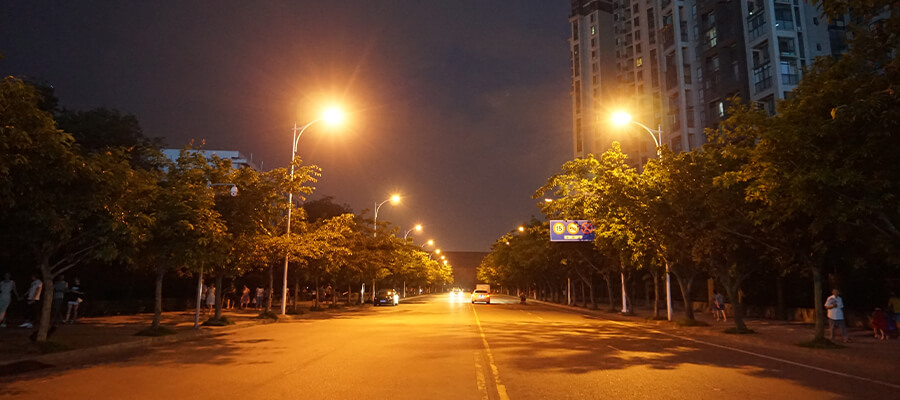Key Points In Solar Street Light System Installation
2021-11-25
VIEW "2053
For better urban construction, most of the current urban construction installations are solar street light systems. The price of solar street light systems is reasonable. The installation procedures of traditional street lights used in the past are more complicated, such as digging pits and burying wires, etc., and they generate huge electricity bills every year. Solar street light systems convert solar energy into electricity without causing pollution. As long as there is the sun, it can continuously provide electricity for street lights. Although the installation of solar street light systems is much simpler than traditional street lights, there are still many points that need to be paid attention to.

1. Installation time and installation angle of solar panels
Solar street light systems should be installed on sunny days as much as possible. If they are installed on a cloudy or rainy day, they only consume electricity and do not charge after the lights are turned on, and the street lights will soon be off. The angle of the solar panel is usually designed according to the angle of 45 degrees, so that the street light can fully absorb the sunlight even in winter. There are also some street lights that have adjustable solar panels. For example, the solar panel of EXC-CR-Z02 solar street light system can be adjusted at 0-40 degrees. The orientation of the solar panel must face the sunlight, so that it can absorb solar energy and convert it into electrical energy.
2. Street lights should not turn on on the day of installation
In order to eagerly see the lighting effect, many engineering companies will turn on the lights in the night after installation. Because the new battery is not fully charged when it leaves the factory, if the light is turned on after the installation is completed, it will not reach the designed number of rainy days. The correct way is to connect the controller but not the load after installation. After charging for one day during the day the next day, connect the load again in the evening, so that the battery capacity can reach a higher level. Of course, doing so will increase some labor costs.
3. The height of the pole depends on the environment.
Generally, solar street light systems are installed in sub-roads, parks, residential areas and other places, and the height of the light poles can be determined according to the requirements of customers. But the pole should not be too high, generally 4-6 meters. When designing solar street light systems, it is necessary to consider the use area of solar street lamp, climatic conditions and other factors. Although the higher the configuration, the better the lighting effect, but the cost situation and the actual use of customers should also be considered.
4. Connection of the controller.
Solar street light systems should use waterproof controllers as much as possible to ensure long-term stability while preventing users from changing the lighting time at will. If you use a non-waterproof controller, bend the wiring into a U-shape because the terminal is facing downwards, which can prevent water from pouring into the controller from the line.
5. Check whether the street light is skewed
When you are in the middle of the road, check whether the lamp arm is skewed and the position of the lamp head is correct. If there is no problem, no adjustment is required. If the lamp head is not correct, you need to re-adjust until the installed street lights are all adjusted neatly. When the lamp arm and lamp caps are relatively positive, the lamp pole base should be pre-embedded twice, and the lamp pole base should be built into a small square with cement, so that the solar street lamp is firmer and more reliable, and the safe use of the street lamp is ensured.

